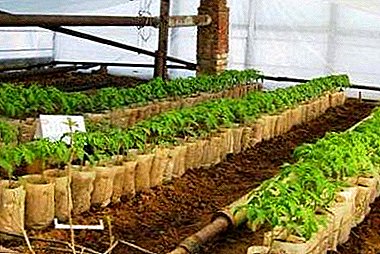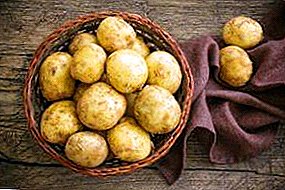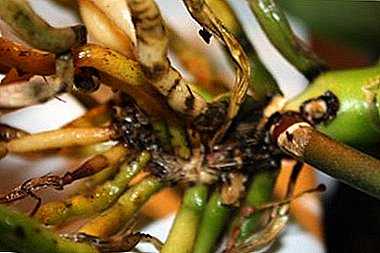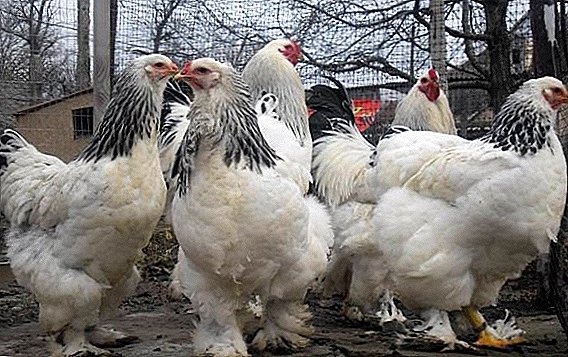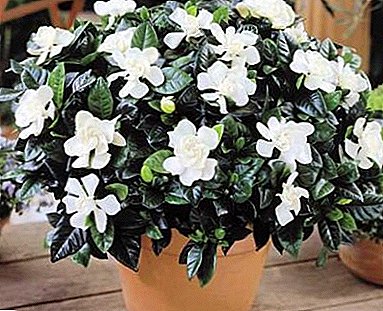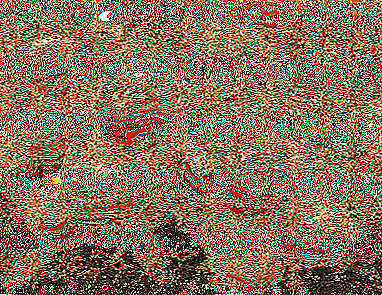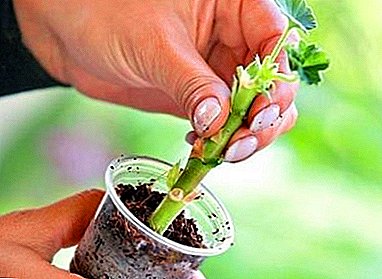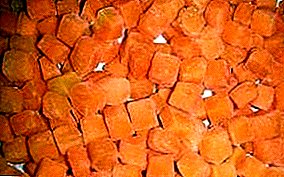 In our area, the Venidium is only gaining popularity. Perhaps in a few years this exotic flower will become an integral part of flower beds and terraces of local amateur flower growers. In this article we will talk in detail about the botanical description of the Venidium, we will understand the rules of planting and caring for a colorful plant.
In our area, the Venidium is only gaining popularity. Perhaps in a few years this exotic flower will become an integral part of flower beds and terraces of local amateur flower growers. In this article we will talk in detail about the botanical description of the Venidium, we will understand the rules of planting and caring for a colorful plant.
Description
Benidium is also called the African daisy or steppe monarch. In the natural habitat, this flower is most often found on the territory of Namibia and South Africa. In that warm southern climate, the Venidium occurs one-year and two-year-old, but in the territory of our country the monarch of the steppe lives only one season, which is associated with cold weather conditions in the winter season. 
Important! In order for the seeds of Venidium to germinate as quickly as possible, the box with the seedlings must be put on the southern window-sill.
Venidium belongs to the plants of the Compositae or Aster family. In its genus, there are about 30 species of flowers. On the territory of our country, only a few species of African chamomile are popular in decorative and landscape design. The plant has a branched root system, which, however, remains superficial even in the dry and hot steppes of Namibia. Stems and leaves covered with a little hairy pubescence. The leaves are painted in a saturated green color, arranged alternately throughout the stem, have a dissected or lobed structure. Peduncles reflected in the sun with a bright burgundy shade. 
In addition to the venide, representatives of the Astro family are also such plants: cornflowers, burdock, artichoke, dandelion, scorzonera (black carrot), lettuce, chicory, sunflower, aster, dahlia, calendula, marigold and chamomile.African chamomile reaches a height of 70-80 cm, its flower stalks are very similar in structure to all known chamomile or sunflower (you guessed where the plant had the name African chamomile). Flower petals have a broaching structure with points at the tips. Venidium can please the eye with colors of orange, yellow, white and pink colorings. The diameter of the flowers often varies from 10 to 12 cm, in some species they are larger - up to 14 cm, in some smaller ones - up to 5 cm.
On the territory of our country, the monarch of the steppe pleases the eye with its flowering from the beginning of June to the first snow. And on the site of withering flowers, new ones are quickly formed (naturally, if the plant is properly and timely taken care of). After the end of the flowering period, the process of fruit formation begins. Fruits are presented in the form of bare winged seeds. 
Kinds
The popularity of domestic gardeners at the moment won only a few species of venidium. But this popularity is growing every year, and there will be more than enough work for breeders. So far, on the flowerbeds and terraces of our country you can find such species of African chamomile:
- Venidium is calendula. In Namibia and South Africa, this plant species is perennial. On the territory of our country, it is customary to plant it in rooms to decorate indoor or office interiors. Benidum marigold pleases its bloom for a long time. Its flowers do not exceed 4 cm in diameter, however, they are distinguished by narrow beautiful petals, which is why they are similar to calendula or marigold.
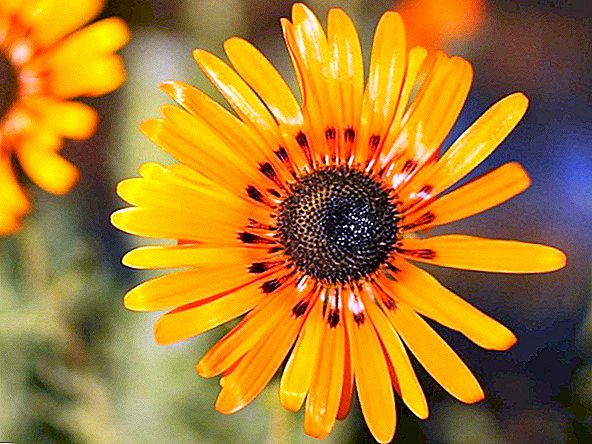
- Venedium magnificent. The elegance of this flower fascinates and does not leave indifferent absolutely all amateur flower growers. This type of steppe monarch will look great not only in flowerbeds, but also in the balcony or vazonnyh decorative plantings. Baskets of this plant reach a diameter of 12 cm and have a contrasting color palette. All of the African camomile species listed below are varieties of the magnificent Venidium.

- "Orange Prince". This species of Venidium very much resembles a decorative fiery-sunny sunflower. Its flowers have a magnificent structure, the petals are slightly curved on the outer side of the base of the peduncle.

- "Prince Zulu". A beautiful plant with a snow-white color that lovers of white flowers will love. The exclusivity of the "Prince Zulu" is that its core has a mauve color, and the tips of some petals may please with small lilac dashes.

- DwarfHybrids. Cute bushy plants of small height (up to 30 cm). Differs in creamy-white or orange color of flowers, the base of which has a lilac shade. DwarfHybrids are well suited for planting in containers or on small alpine slides.

Did you know? African blue-eyed chamomile - one of the varieties of Venidium. It is found not only in South Africa and Namibia. It also grows in Mexico, USA and Australia, where it has become a famous weed. In these countries, people massively destroy the wild crops of this plant.
Landing
To grow African chamomile is best seedling method. Planting seeds directly in open ground can be carried out only in regions where the climatic conditions are mild and warm, that is, in the southern part of Russia and in the Crimea. 
Planting in open ground can be carried out in more northern regions, but in this case, the period of flowering of the Venidium will begin a month and a half later. By the way, the risk of late flowering also exists in southern Russia, because the climate of that region is still very far from the climatic conditions of southern Africa. We will talk about the step-by-step process of growing the monarch of the steppe by the seedling method, which is the most popular and versatile:
- For growing seedlings, you must use a special container, boxes for seedlings, cups or food packaging.
- The soil for seedlings should be neutral acidity, loose and with good aeration.
- At the bottom of the planting tank, it is necessary to build a drainage, and then pour it in the previously prepared soil (a mixture of peat and river sand).
- The seeds of the plant are buried 3-5 mm into the soil. The intervals between crops should be within 3-4 cm, otherwise there is a risk of thickening of the seedlings.
- After planting, moisten the soil and cover with a film or glass. This will create a stable microclimate, which will contribute to the rapid emergence of seeds.
- The optimum temperature for growing seedlings is 20-24 ° C. Shoots usually appear 15-20 days after sowing. During this period, the box with the seedlings must be opened regularly (remove the film or glass) and do not forget about watering (only after the topsoil has dried).
- Another important condition is stable regular coverage of seedlings. If there is little sunshine (for example, constantly overcast weather), then it is necessary to acquire special illuminators. Without enough light, shoots can appear with a great delay.
- The optimal period for transplantation is considered mid-late May (for the middle band). But, again, you need to focus on the weather conditions and the general climate of the region. Experts note that seedlings should be planted in open ground only after the threat of night frosts has completely disappeared. The average daytime air temperature should be between 14-16 ° C.
- Remember that African chamomile loves sunny places, but it is very sensitive to drafts. South-west or south-east places on the site, which are reliably protected from strong winds, are best suited for planting.
- Planted in open ground should be only the most developed and powerful flowers. When planting, it is necessary to leave the whole earthen room on the root system of the seedling. The intervals between the holes for seedlings should be in the range of 25-30 cm. At the bottom of the planting hole you can put a little complex fertilizers that are sold in almost any flower shop.
- Immediately after planting, the flowers are watered and shaded for a few days. Too frequent watering is not necessary, as it threatens fungal infection. In addition, the Venidium is accustomed to grow in the hot, dry climate of Namibia and South Africa, where the rainy season is a rare treat.
 Cultivation of Venidium
Cultivation of VenidiumImportant! To seedlings of flowers were strong, they need to be hardened. To do this, as you grow, you should gradually reduce the temperature in the room, and a few days before planting in open ground, seedlings should be taken out for 2-3 hours outside.
If you want to plant an African chamomile immediately in the ground, not growing seedlings, then you should start planting no earlier than mid-April. The soil and planting scheme must be observed the same as we indicated for the seedling method. Immediately after planting, the seed area is covered with a film, where the temperature must correspond to room temperature. It is possible to open the film only when the average daily temperature of at least 15 ° C is established outside (this is on condition that the seedlings appear already). 
Care
If you want the Venidium to please you with a lush and beautiful flowering for a long period, you should take care of its care, which consists of the following operations:
- Watering. Moderate, not more than once a week. During the dry periods of summer watering can be carried out 3-4 times every 2 weeks. Excessively abundant watering will lead to the development of a fungal infection in the root system of the plant.
- Top dressing. Held twice during the entire growing season. The first - before flowering (preferably in May), the second - in the active flowering period (July-August). You can feed an exotic flower with complex mineral or organic fertilizers.
- Loosening. In the presence of free time should be carried out as often as possible. Loosening promotes good aeration.
- Cleaning peduncle. As soon as the flower fades, it must be removed. In its place, 2 young buds will be formed at once. So the bush will become more magnificent and more beautiful.
- Anti-aging pruning leaves. Hold regularly for maximum bloom activation. Excess leaves pull out all the juice, which becomes insufficiently spike.
- Garter. It is held for higher representatives of the Venidium. Reliance allows the plant to withstand strong gusts of wind.
- Weeding. It should be regular, as the small weed picks up all the useful substances from the soil and draws a large amount of moisture onto itself.
To enrich the soil and nourish the plants, use organic fertilizers: straw, pigeon droppings, Florex granulated chicken droppings, bone meal, fish meal, whey, potato peel, compost, eggshell, banana peel fertilizer and tobacco dust.

At the end of the warm period of the year, seeds are collected from the fruits of the Venidium, which will be suitable for planting next spring. Seeds are stored in paper envelopes or cloth bags. They must be stored in a warm dry place at temperatures of 20-25 ° C.
Did you know? Another name for venidium is arctotis (Arctotis). Translated from Greek, it means "bear ear".
It is not necessary to prepare flowers for winter, as in our climatic zone, the venide grows only as an annual plant. The African guest is not able to withstand the winter frosts (unless using it as a houseplant). In late autumn, withering bushes are dug up and utilized, and in the spring the planting procedure is repeated. 
Familiarize yourself with the advantages of using drip irrigation, as well as learn how to organize a system of drip irrigation at the dacha.
Diseases and pests
In total, the pests do not interfere with the Venidium normally grow. Sometimes African chamomile can be hit by an aphid invasion, which is successfully destroyed with insecticidal drugs. Recognize black aphids on exotic flowers can be on some grounds:
- On young shoots, buds and on the bottom of the leaves with the naked eye, you can see a cluster of small black or brown parasites.
- White "lumps" among the crowd of pests are covers that they have thrown off in the process of life activity.
- Affected areas of the plant are covered with a sticky liquid, which produces aphids.
- The affected leaves curl and dry after a while. The plant loses its decoration, flowers and young shoots begin to fade.

In addition to venidium, aphid is one of the most harmful and common pests of such plants: apple, cabbage, cucumber, dill, viburnum, plum, dieffenbachia, currants, calico, hydrangea, sunflower and azalea.
In addition to the use of insecticides, aphids can be driven mechanically: pour water over plants from under the hose. But this method is not particularly benign, since an excessive amount of water can damage the root system of the venide. Near the monarch of the steppe, you can plant a Dalmatian daisy, which repels a black aphid.
Important! The only kind of disease that threatens the venide is a variety of rot caused by fungi. To combat them, you can use fungicides.

Use in decorative and landscape design
Venidium is by its very nature a very bright and colorful flower that will become a unique guest and the main character of any decorative flower arrangements used on flower beds, terraces, and landscape parks. He will also be great to contemplate as a tapeworm. African daisy does not fade for a long time, so it is advisable to use it in the art of ikebana.
Read about annual plants such as toad grass (sicenus), Turkestan desert desert (alissum), bidens, echinocystis, iberis brachikoma, lobularia, nigella damask, Drummond phlox, argiranthemum and pentas.
Now you know how to grow a beautiful South African plant on your own. Provide proper care for the Venidium, and the plant will delight you with its flowering throughout the summer and parts of autumn.
Feedback from users on the Venidium network

Soil: prefer light, well drained, fertilized soils
Reproduction: sowing seeds in boxes for seedlings in March-April, in greenhouses or greenhouses. Planted in open ground after the end of spring frosts, maintaining a distance of 25-30 cm.
Use: for flower beds, groups, vases, stony hills and cutting.








